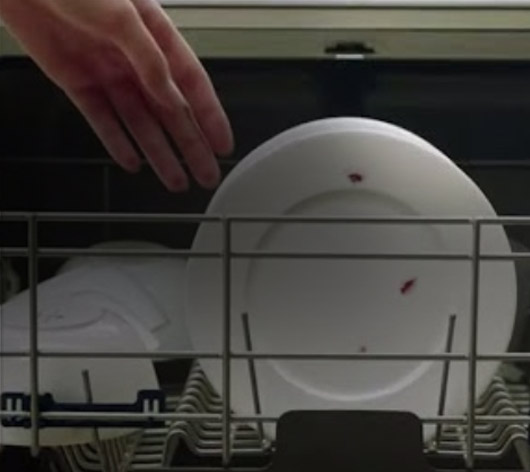
Is Your Dishwasher Not Cleaning Dishes Well?
It's hard to come to grips with a dishwasher not getting dishes clean—that's a pretty serious hitch in the dish-dishwasher relationship. But don't give up on your troubled appliance! We have ideas for helping you diagnose and solve some of the performance issues that commonly occur with automatic dishwashers.
1. Test for Running Water
Dishwashers are more water-efficient than handwashing… but they still need water to clean your dishes. Place an empty cup on both the top and bottom racks and run the machine. If the cups are full of water after the cycle, that’s a good sign. At least you know your dishwasher is getting water.

2. Check the Drain
You should never see pooling water in the bottom of your dishwasher when it is not running. Pooling water is a sign that your dishwasher is not draining properly. If your machine has a filter, remove it and clear any obstructions or debris that may have formed. If your machine does not have a filter, scoop out any debris that has collected from the bottom of the dishwasher.
3. Check Spray Arms for Obstructions
Manually spin the spray arms to ensure a fluid rotation. If anything is obstructing the spray arm’s path, remove it.

4. Check Spray Arm for Clogs
Occasionally the spray arms may clog from hard water or food debris. Clean the holes on the spray arm using a toothpick. The details make all the difference.
5. Try Cascade Platinum Plus
Troubleshooting this one is easy. Sometimes, getting better cleaning and shinier dishes from your machine is simply a matter of detergent choice. Using just one premium ActionPacs™ per dishwasher load can deliver dazzling results.
6. Check the Dispenser
Make sure the dispenser is dry and closes firmly. This allows the detergent to be released properly. If you’re concerned your ActionPacs aren’t fully dissolving, we have a whole handy-dandy guide on how to use Cascade ActionPacs.
7. Load Dishes Evenly
Loading your dishwasher properly can make a big difference. Place dishes evenly to avoid nesting—if the water spray can’t reach them, it can’t clean them. If your dishwasher isn’t cleaning glasses properly, make sure you’re loading them properly.

8. Mix Up Silverware
Spread out forks, knives, and spoons to expose them to water. You might not think it, but there are a number of things to consider when cleaning utensils in the dishwasher.
Do you feel empowered to fix your dishwasher? Great! You’re now on the path to becoming an Official Dishwasher Master: Simply explore the full range of Cascade dishwasher detergent products and learn all the ways to solve any dishwashing challenge. Your reward is a lifetime of sparkling-clean dishes.
Recommended Articles
How To Maintain Your Dishwasher
The dishwasher is one of the most-used household appliances. Learn how to maintain and take care of your dishwasher to get clean dishes every time.
Filming Caused By Hard Water - FAQ
Do you have hard water causing white film on your dishes and glasses? Get answers to FAQs about Cascade & find other solutions & tips for dish issues.
Give Your Dishes Cascade's Ultimate Clean
Try out the ultimate dish and dishwasher cleaning program with Cascade Platinum, Cascade Rinse Aid, and Cascade Dishwasher Cleaner.